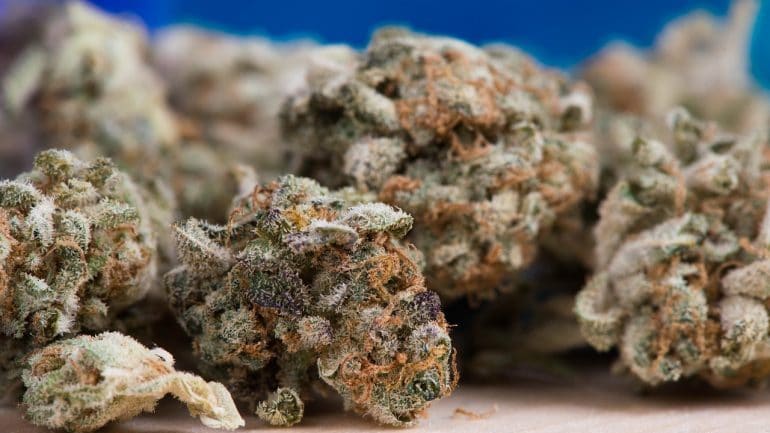44 Alarming Addiction Statistics and Facts for 2024
written by / January 10, 2022
We’ve compiled the following list of addiction statistics from several verified sources to help educate you. Addiction is a big problem throughout the world, with a lot of people battling various forms of the disease. Because of addiction’s prevalence in the world today, it has become necessary to know the various forms this problem takes and the effects these substances have on us.
These statistics cover several substances, including cocaine, alcohol, and prescription medications, to give a better idea of the challenges those with an addiction face. As the following data will show, these substances affect people across all genders, races, and economic backgrounds.
Top 10 Important Addiction Statistics
- Only 10% of Americans dealing with addiction receive treatment.
- 4% of American teenagers struggle with a form of substance use disorder.
- 14.8% of young adults struggle with at least one form of substance use disorder.
- 1 in every 16 adults reported having a substance use disorder (SUD) in 2017.
- Meth is currently used by approximately 897,000 teenagers and adults in America.
- Approximately 5 million Americans regularly use cocaine.
- Around 34 million Americans smoke cigarettes.
- Approximately 2,200 individuals in the US die each year due to alcohol poisoning.
- The number of opioid overdoses in big cities has risen by 54% in 16 states.
- Approximately 4.1 million adults in America over 12 years of age struggled with a marijuana use disorder in 2017.
General Statistics on Addiction

Here, we’ll be looking at general stats on addiction and people who suffer from addiction.
1. Only 10% of Americans dealing with addiction receive treatment.
(USA Today)
As stated earlier, over 23 million people in America struggle with at least one type of addiction. Out of these, very few get treatment. This leaves a lot of people trying to live with a substance addiction.
2. More than 20% of Americans with an anxiety disorder also suffer from a drug use disorder.
(NCBI)
This shows the direct relationship that anxiety and depression have with substance abuse. These may be factors that contribute to or affect drug abuse.
3. Every year, 3.3 million fatalities occur due to alcohol consumption.
(World Health Organization)
It’s also one of the leading causes of preventable deaths. These alcohol statistics include the results of short-term actions, such as reckless driving, or long-term health problems, such as cancer or liver disease.
4. In 2017, approximately 38% of adults with substance use disorder symptoms had an illegal drug use disorder.
(Bright Path Program)
According to the 2017 National Survey on Drug Use and Health, Illicit drug use refers to the abuse of any illegal drugs, as well as the misuse of certain prescription drugs. The list of illegal drugs includes heroin, marijuana, cocaine, inhalants, or methamphetamine.
5. Genetics and one’s environment have a large impact on addiction.
(NCBI)
Why do people do drugs? Genetics, along with the impact one’s environment has on gene expression, accounts for about 40% to 60% of an individual’s risk of addiction.
Teenage Drug Use Statistics (Ages 12–17)
In this section, we’ll be discussing drug addiction among teenagers.
6. 4% of American teenagers struggle with a form of substance use disorder.
(American Addiction Centers)
An estimated 992,000 adolescents—i.e., one in every 25 persons aged 12–17—experience some kind of challenge with substance abuse.
7. 443,000 adolescents aged 12–17 had alcohol use disorders in 2017.
(SAMHSA)
This value correlates with 1.8% of all adolescents, and it shows that teens are more susceptible to the effects of drugs than adults. The 2017 teens’ drug abuse statistics were somewhat lower than the figures from 2002 to 2015, though they were comparable to the 2016 estimate.
8. Approximately 741,000 teenagers suffered from an illicit substance use disorder in 2017.
(82717 Life and Drug War Facts)
This corresponds to approximately 3% of teenagers aged 12 to 17 who admitted to having had an illicit drug use disorder. Additional addiction statistics show that an estimated 7.5 million individuals aged 12 and higher had at least one illicit drug use disorder.
Young Adults Age 18–25
Here, we’ll be focusing on young adults and drug addiction within this age group.
9. 14.8% of young adults struggled with at least one form of substance use disorder in 2017.
(Bright Path Program)
In the 2017 National Survey on Drug Use and Health, it was discovered that 5.1 million people in the 18–25 age range struggled with a substance use disorder. This accounts for one out of every 7 people in this age group.
10. 7.3% of young adults admitted to having an illicit drug use disorder in 2017.
(American Addiction Centers)
The substance abuse statistics show that about 2.5 million young adults between the ages of 18 and 25 reported struggling with an illicit or illegal drug use disorder in the previous year.
Ages 26 and Older
How does drug addiction affect those over the age of 26? We’ll be taking a closer look at this in the following section.
11. In 2017, 5% of adults lived with an alcohol use disorder.
(NSDUH)
Roughly 10.6 million people aged 26 years and older struggled with alcoholism in 2017, according to the drug addiction statistics. It was also noted that the values obtained for 2017 were lower than most of the years leading up to it.
12. 1 in every 16 adults reported having a substance use disorder (SUD) in 2017.
(NSDUH)
Approximately 13.6 million people aged 26 years and older admitted to dealing with a substance use disorder. This value represents 6.4% of the total individuals in this age range.
Drug Use by Race and Region
Does where you live or your race affect your vulnerability towards addiction? We’ll be exploring that question in this section.
13. Native Americans and Alaska Natives 12 years of age and up had the highest level of drug abuse in 2017.
(American Addiction Centers)
In the survey carried out, 12.8% of Alaskan Natives and Native Americans had trouble with drug abuse or misuse. This is higher than the measured statistics in 2016, which recorded 11.7%.
14. About 4.6% of Pacific Islanders and Native Hawaiians struggled with illnesses related to drug use in 2017.
(American Addiction Centers)
These drug use statistics show that 4.6% of Pacific Islanders and Native Hawaiians struggled with drug use in 2017. This is lower than the 4.8% recorded in 2016’s results.
15. Approximately 6.8% of African Americans struggled with drug use-related illnesses in 2017.
(American Addiction Centers)
6.8% of African Americans, according to the drug statistics from 2017, had issues with drug use, while 6.6% of Latinos or Hispanics suffered from drug use illnesses. Compared with the values from 2016, the values are getting lower among African Americans (7.6%).
Methamphetamine Addiction
Here, we’ll be looking specifically at addiction to methamphetamines.
16. Meth is currently used by approximately 897,000 teenagers and adults in America.
(Talbott Recovery)
Research shows that untreated addiction to meth, one of the most abused drugs out there, can lead to potentially dangerous results. A considerable percentage (30%) of law enforcement agencies see it as the biggest drug threat and one that requires the most resources to tackle.
17. Meth is involved in 85%–90% of stimulant-related drug fatalities.
(Talbott Recovery, CDC)
Meth is responsible for causing the highest death toll among stimulant-related drugs, a concern we continue to see among the meth addiction facts. Data from 2019 add that the rate of drug overdose deaths involving methamphetamine and other psychostimulants was 5.0 per 100,000. Worse, the number of deaths caused by stimulant drugs rose on average by a margin of 29% per year from 2012 to 2019.
18. Admissions to meth addiction therapy increased by 3% from 2014 to 2015.
(Talbott Recovery)
These meth statistics show that some people, although few, are seeking treatment for their meth addiction. With more efforts made to educate people, the results should keep improving, and more people will be encouraged to get therapy for their addiction. These statistics also show that up to 135,264 people got help for meth addiction in publicly funded facilities in 2015.
Cocaine Statistics
In this section, we’ll be focusing on addiction to cocaine.
19. Approximately 5 million Americans regularly use cocaine.
(CDC, Addiction Center)
In 2017, 2.2 million Americans reported having taken cocaine at least one time in the previous month. Nearly 4% of students in 12th grade admitted to using cocaine at least once in 2018.
20. In 2017, cocaine was associated with 1 out of 5 overdose-related fatalities.
(CDC)
This drug abuse statistic also states that the proportion of fatalities associated with cocaine overdose improved from 2016 to 2017 by a margin of 34%. Furthermore, in 2018, the rate of cocaine overdose deaths was 4.5 per 100,000. The drug abuse facts verify that cocaine can result in organ damage, cause respiratory failure, and provoke mental disorders.
21. Approximately 966,000 American adults struggled with a cocaine use disorder in 2017.
(NY Post)
Cocaine is one of the many substances that have contributed to widespread illegal drug use in America. These statistics also indicate that more than 5 million Americans use cocaine regularly.
Tobacco Addiction

While it’s not technically a drug, tobacco can lead to a serious addiction and we’ll be taking a closer look at it in this section.
22. Around 34 million Americans smoke cigarettes.
(Time)
This is partly because cigarettes are relatively easy to buy once you’re over 18 years of age. The drug abuse statistics also report that the proportion of Americans smoking cigarettes fell from 21% in 2005 to 14% in 2017. About 604,000 Americans aged 12–17 and about 1.2 million Americans aged 18–21 smoked their first cigarette in 2017.
23. Approximately 16% of men in America smoke cigarettes.
(CDC)
Only 12% of American women smoke cigarettes. People who have the highest probability of using cigarettes are those who live in poverty, have a disability, or don’t have a university degree. Smoking cigarettes in the US results in more than 480,000 deaths each year.
Alcoholism Statistics
Alcoholism is a serious addiction that has ruined many lives. Here, we’ll be focusing on alcoholism.
24. Of the 61.4% of students who drive in America, 7.8% have driven after drinking alcohol.
(Promises)
This shows that of the students who drive, 7.8% had driven one or more times after drinking alcohol. After drinking, the incidence of driving a car or other vehicle was greater among men (9.5%) than women (6%).
25. This disorder leads to over 200 distinct types of health conditions and injuries.
(The Recovery Village)
The alcohol abuse statistics indicate that alcohol abuse costs the US about $250 billion annually. According to data from 2016, approximately 15 million Americans are diagnosed with an alcohol use disorder every year, and an estimated 136 million Americans consume alcohol—which is about one-third of the population.
26. Approximately 2,200 individuals in the US die each year due to alcohol poisoning.
(Promises)
How many people die from alcohol? This comes out to an average of six people a day. Between 2010 and 2012, an estimated 76% of the deaths caused by alcohol poisoning were among adults aged 35–64.
27. Approximately 60%–70% of the married couples who have been in a physical altercation with each other abuse alcohol.
(American Addiction Centers)
How many families in the US are affected by alcoholism? Alcohol abuse and alcoholism are an issue that can ruin a marriage or drive a wedge. Individuals who drink can blow through the family budget, cause fights, neglect their children, and otherwise impair the health and happiness of the individuals they love. In time, family members may even create symptoms of codependency, unintentionally keeping the addiction alive, even if it harms them. However, family therapy and rehabilitation can be of assistance.
Opioid Addiction Statistics
In this section, we’ll be looking at addiction to opioids.
28. Approximately 130 Americans die from issues due to an opioid overdose every day.
(Pharmacy Times and Addiction Center)
Figures show that up to 399,230 Americans have died as a result of opioids between 1999 and 2017. In America alone, there were 47,600 recorded deadly overdoses in 2017, each involving a minimum of one opioid.
29. Approximately 21%–29% of patients misuse painkiller opioids.
(NCBI)
The Opioid Crisis statistics show that this substance has had a drastic impact on the nation, resulting in public health concerns relating to social and economic welfare. Of the people who take prescription opioids meant for chronic pain, 21%–29% misuse them.
30. Just in 2017, 2 million Americans misused prescription opioids for the first time.
(NIH)
A lot of individuals who misuse prescription opioids have a high probability of becoming opioid addicts. These same drug facts also state that around 2 million Americans struggle with an opioid use disorder.
31. Doctors released 191,218,272 opioid prescriptions in 2017.
(CDC and Addiction Center)
This is a slight decrease from the 200 million opioid prescriptions that were released annually between 2006 and 2016. Worse, the rate at which opioid painkillers have been sold has risen by 300% since 1999.
32. The number of opioid overdoses in big cities has risen by 54% in 16 states.
(NBC News)
This statistic also notes that overdoses of opioids have risen by 30% in 52 locations across 45 states from July 2016 to September 2017. As you can see, the number of opioid overdoses, not to mention the overall use of drugs in America, has consistently been on the rise.
33. Approximately 80% of individuals who used heroin also misused prescription opioids.
(NIH and Addiction Center)
This demonstrates the relationship between the use of prescription opioids and heroin. In a survey carried out in 2014, 94% of the respondents said they first used heroin because most prescription opioids are costlier and harder to obtain. The opioid abuse statistics also go on to show that approximately 4% to 6% of people who misuse heroin had made a shift from prescription opioids. It’s estimated that up to 23% of all the people who take heroin have also developed an addiction to opioids.
34. 10% of the people who misuse opioids become addicted to them.
(Addiction Center)
The opioid addiction facts show that most people don’t think it’s a big deal to frequently share their unused pain relievers, apparently oblivious to the hazards of non-medical opioid use. When a friend or relative gives opioids to an adolescent, there’s a good chance they will misuse the prescription pain relievers and possibly even develop an addiction.
Heroin Addiction Statistics
In this section, we’ll be discussing addiction to heroin.
35. 886,000 Americans used heroin at least once in 2017.
(Niznik Behavioral Health and Addiction Center)
The statistics counting the number of people who used heroin in America are on the high side. According to opiates addiction statistics, about 494,000 people frequently use heroin. In 2017, 81,000 Americans took heroin for the first time.
36. People addicted to prescription drugs are 40 times more likely to become addicted to heroin.
(American Addiction Centers)
These heroin addiction facts show that alcohol addicts are twice as likely to also be addicted to heroin, while cannabis addicts are 3 times as likely, and cocaine addicts are 15 times as likely. This demonstrates a clear correlation between heroin addiction and addiction to other substances.
37. 25% of those who abuse heroin will likely become addicted to it.
(Addiction Center)
The heroin statistics continue to prove that it’s a highly addictive substance. Obviously, it’s never a good idea to try it because the chances of getting addicted are too great. This is why the Center for Disease Control and Prevention (CDC) reports that in most demographic groups in the US, the use of heroin has increased over the previous two centuries.
Prescription Drug Abuse Statistics
Here, we’ll be focusing on addiction to prescription medications.
38. In 2017, around 1.7 million individuals over 12 years old had a prescription pain reliever use disorder.
(Surgeon General and American Addiction Centers)
According to these statistics, 0.6% of people 12 years old and upwards have a disorder associated with pain reliever abuse. In addition, in 2017, tranquilizers, pain relievers, sedatives, and stimulants were some of the most abused prescription drugs.
39. Opioid painkillers account for 38.2% of drug overdose fatalities.
(Foundation for a Drug-Free World)
Prescription drug abuse leads to the biggest proportion of drug overdose fatalities. Of the 22,400 people who died from a drug overdose in the United States recorded in 2005, the most frequently found drug was opioid painkillers, at 38.2%.
Marijuana Addiction Statistics

In this section, we’ll be focusing on addiction to marijuana.
40. Approximately 4.1 million adults in America over 12 years of age struggled with a marijuana use disorder in 2017.
(American Addiction Centers)
The majority of individuals dealing with marijuana addiction issues were in the age range of 12–25. In 2014, nearly 6% of full-time US university students smoked cannabis daily. This is more than 3 times the number of daily smokers 20 years ago in this demographic.
41. Each year, approximately 30–40 million Americans use marijuana by smoking it.
(Addiction Center)
What is the most commonly used illicit drug among persons aged 12 and older? In 2017, about 1.2 million Americans aged 12–17 and 525,000 over 26 years used marijuana for the first time. Marijuana is increasingly becoming legal across the United States, both for medical and recreational use, but it still isn’t entirely secure because it can be addictive and cause health issues.
42. About 30% of individuals who admit to using marijuana frequently have a disorder with marijuana use.
(Addiction Center)
The marijuana addiction facts show that at least once in the previous year, 13% of 8th graders, 27% of 10th graders, and 35% of 12th graders used marijuana. Less than 1% of 8th graders, approximately 3% of 10th-grade students, and approximately 5% of 12th graders reported using it daily. Marijuana’s average batch has become stronger, which has increased the overall number of marijuana deaths per year. The average marijuana batch in 1990 contained less than 4% THC, but that proportion has since increased to over 12%.
The Primary Causes of Drug Addiction
Here, we’ll be looking at the possible causes of drug addiction.
43. Genetics account for approximately 40% to 60% of a person’s risk of addiction.
(Heads Up)
Addiction stats show that people are more likely to be vulnerable to addiction if they have family members who are addicts.
44. Environmental variables may boost a person’s risk of addiction.
(Healthline)
Environmental factors that can increase the risk of addiction include parental neglect, peer pressure, abuse, and trauma.
Conclusion
Addiction can harm a person’s normal activities and damage their relationships with friends and loved ones. However, there are several treatment procedures that are proven to be helpful with addiction. These addiction statistics going into 2022 should educate readers about the dangerous effects of addiction and help them make better choices.
Table of Contents
Top 10 Important Addiction Statistics
General Statistics on Addiction
Teenage Drug Use Statistics (Ages 12–17)
Young Adults Age 18–25
Ages 26 and Older
Drug Use by Race and Region
Methamphetamine Addiction
Cocaine Statistics
Tobacco Addiction
Alcoholism Statistics
Opioid Addiction Statistics
Heroin Addiction Statistics
Prescription Drug Abuse Statistics
Marijuana Addiction Statistics
The Primary Causes of Drug Addiction
Conclusion
Table of Contents
Top 10 Important Addiction Statistics
General Statistics on Addiction
Teenage Drug Use Statistics (Ages 12–17)
Young Adults Age 18–25
Ages 26 and Older
Drug Use by Race and Region
Methamphetamine Addiction
Cocaine Statistics
Tobacco Addiction
Alcoholism Statistics
Opioid Addiction Statistics
Heroin Addiction Statistics
Prescription Drug Abuse Statistics
Marijuana Addiction Statistics
The Primary Causes of Drug Addiction
Conclusion








